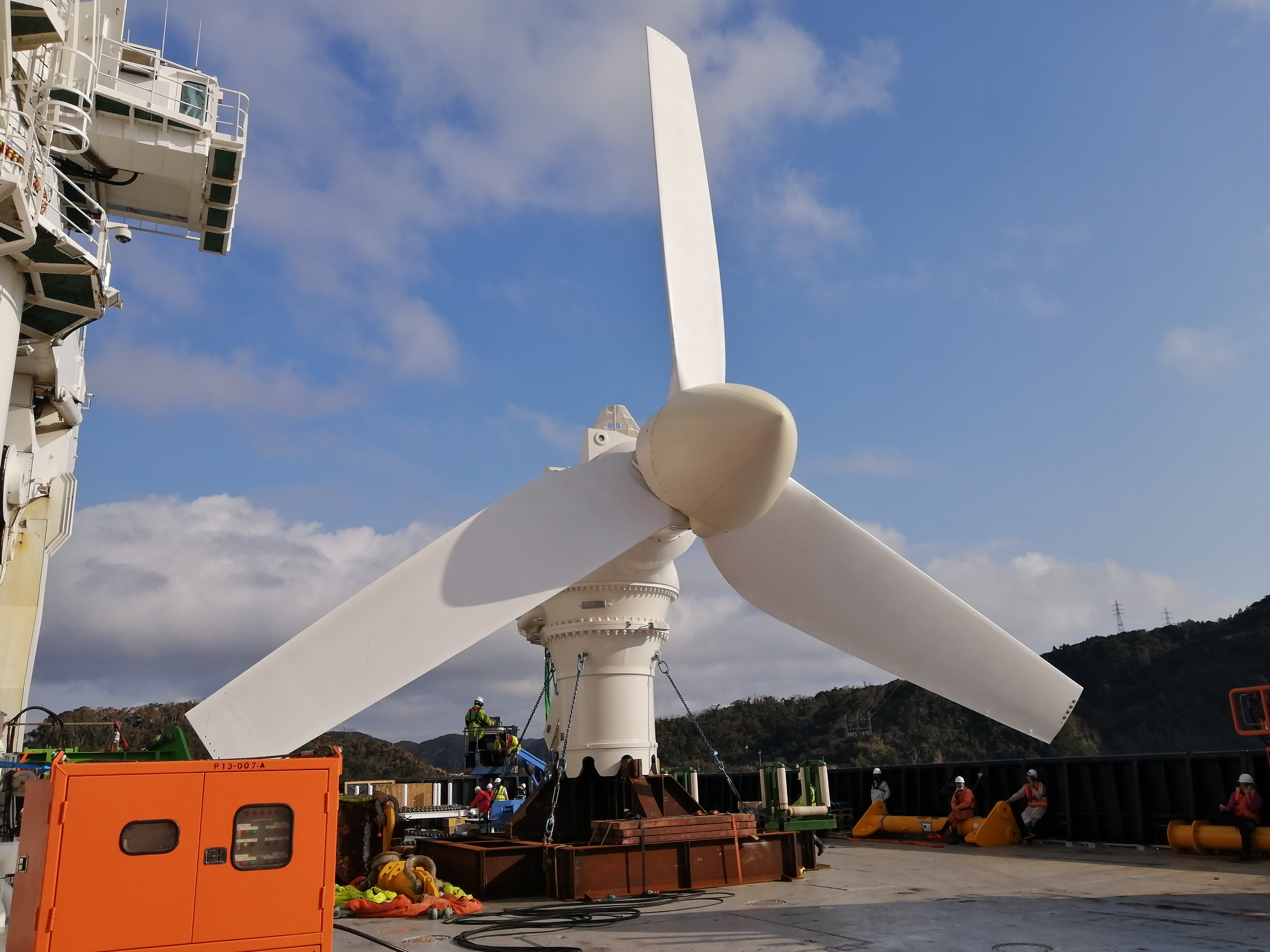
The AR500 turbine is awaiting installation in waters off the Goto Islands, Japan.
A tidal turbine built and tested in Scotland has been installed in waters off a Japanese island chain, which is the latest example of how the East Asian country is exploring the potential of sea-based forms of energy production.
In a statement, London-listed firm Simec Atlantis Energy said on Monday that its pilot turbine had generated 10 megawatt hours in its first 10 days of operation.
The AR500 turbine was assembled at a factory in Scotland before being shipped to Japan where it was installed in the waters around Naru Island, part of the larger Goto Island chain.
According to SAE, the overall project includes leasing tidal generation equipment and providing offshore construction services to Japanese company Kyuden Mirai Energy.
SAE CEO Graham Reid described the installation as a “huge milestone in the deployment of clean, renewable energy from tidal power and we hope it will be the first of many tidal turbines to be installed in Japan.”
Monday’s news marks the latest example of how companies in Japan, an island nation with thousands of miles of coastline, are focusing on tidal and wave energy projects.
In January, it was announced that shipping giant Mitsui OSK Lines would partner with a company called Bombora Wave Power to explore potential project locations in Japan and surrounding regions.
The collaboration between Tokyo-based MOL and Bombora will focus on finding potential locations for the latter’s mWave system, as well as hybrid projects combining mWave and wind power.
In simple terms, the technology developed by Bombora – which has offices in both the UK and Australia – is based on the idea of using rubber membrane cells that are filled with air and mounted on a submerged structure.
According to a video from the company explaining how the system works, the “flexible rubber membrane design pumps air through a turbine to generate electricity” when waves pass across the system.
The International Energy Agency describes marine technologies as “great opportunities” but adds that additional policy support is needed for research, design and development to “enable the cost savings associated with the commissioning of larger commercial installations.”
For its part, Japan says it wants renewable energy sources to make up 22% to 24% of its energy mix by 2030.
Last October, Prime Minister Yoshihide Suga said the country is aiming for zero net greenhouse gas emissions by the year 2050. By 2030, Japan wants a 26% reduction in greenhouse gas emissions compared to 2013.
However, there is still work to be done for the country to achieve its goals. In 2019, the Agency for Natural Resources and Energy said the country was “largely dependent on fossil fuels” such as coal, oil and liquefied natural gas.